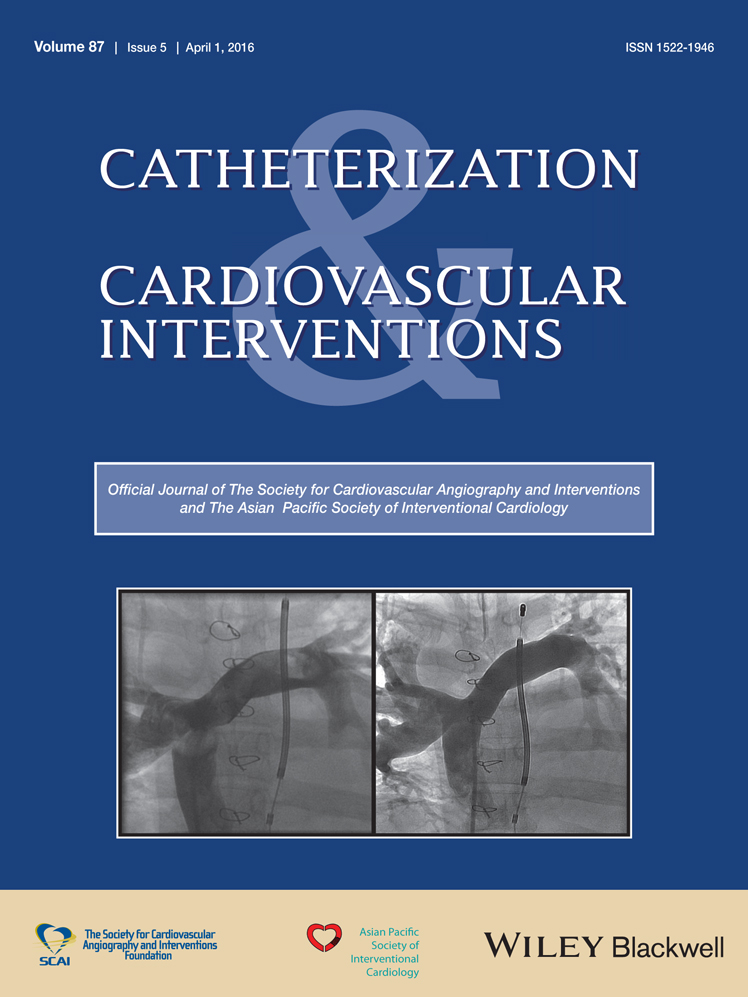Radial artery occlusion and hand strength after percutaneous coronary procedures: Results of the HANGAR study
Conflict of interest: Nothing to report.
Abstract
Objectives: The aim of this prospective study was to evaluate muscle force of the hand, thumb, and forefinger in patients with prolonged radial occlusion after transradial percutaneous coronary procedures. Background: There are no data on hand strength and function in patients with prolonged radial occlusion after percutaneous coronary procedures. Methods: Elective patients with chronic stable angina undergoing percutaneous coronary procedures were evaluated the day before the procedure for radial artery patency, Allen test, hand grip, and thumb and forefinger pinch tests. The same measures were performed the day after the procedure and at follow-up. At follow-up, patients were divided in two groups according to the radial patency (group 1) or occlusion (group 2). Results: Of the 99 patients included in the study, 90 patients had a patent radial artery (group 1), and nine (9.1%) patients had an occluded artery (group 2). At baseline, there were no significant differences in hand grip test between the two groups (42 ± 11 kg in group 1 and 41 ± 17 kg in group 2, P = 0.74). In both groups, after the procedure, the hand grip test values was significantly reduced compared with baseline values (40 ± 11 kg in group 1, P < 0.0001 and 37 ± 17 kg in group 2, P = 0.007). Finally, at follow-up, in both groups, the hand grip test values returned to baseline values. Thumb and forefinger pinch tests did not show significant differences after the procedure and at follow-up, compared with baseline. Conclusions: Radial artery occlusion after percutaneous coronary procedures was not associated with a reduction in hand and finger strength. © 2015 Wiley Periodicals, Inc.




